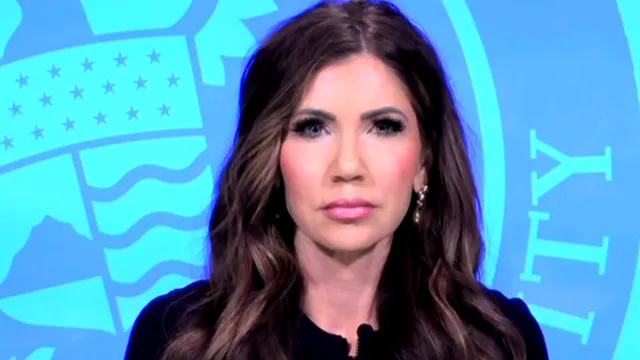
Kristi Noem insists on law enforcement amid protests in California
2025-06-08 21:18- The President has federalized 2,000 California National Guard forces to assist with crowd control during protests.
- Homeland Security Secretary Kristi Noem stated that mask-wearing laws at protests will be enforced.
- This intervention reflects the urgency to maintain safety and order amidst ongoing protests in California.
Express your sentiment!
Insights
On June 8, 2025, Kristi Noem, the United States Homeland Security Secretary, participated in an interview on "Face the Nation" where she discussed federal actions in response to protests in California. President Trump had recently proclaimed a federalization of 2,000 California National Guard forces for 60 days under Title 10 authorities, aimed at managing crowd control during ongoing protests. Noem emphasized that the National Guard soldiers are trained for crowd situations, ensuring safety for peaceful protestors as well as backing up law enforcement officials. In light of reports of violence during protests, Noem highlighted the necessity of quick action and coordination between the National Guard and law enforcement to maintain order and address dangerous situations. During the interview, Brennan questioned the legality of Troops wearing masks during protests, to which Noem reiterated that law enforcement would enforce existing laws, including regarding mask-wearing. There is growing concern that delays in police response could undermine safety and lead to escalated violence at protests.
Contexts
In June 2025, the United States witnessed a significant wave of protests across various cities, echoing movements from previous years while raising new social and political issues. The protests were primarily driven by concerns over systemic inequalities and calls for comprehensive police reform. In response, President Trump launched a multifaceted federal response aimed at addressing the unrest. This response included the deployment of federal law enforcement agencies to cities experiencing heightened tensions, reflecting a commitment to restore order while facing criticism for increasing federal presence in local matters. Trump's administration emphasized the importance of law and order, underlining that any form of violence or vandalism would not be tolerated and committed resources to ensuring safety for all citizens. The federal response was not solely centered on enforcement; it also included dialogue with community leaders and stakeholders to address the underlying issues causing unrest. The Administration encouraged local law enforcement agencies to engage with community members and employ de-escalation tactics. This dual approach sought to balance the immediate need for public safety with long-term strategies for community engagement and healing. Additionally, the Trump administration leveraged federal funding to support local initiatives aimed at bringing about socio-economic improvements in the affected areas, particularly in communities that felt neglected for decades. Critics of the federal response argued that the presence of federal forces could exacerbate tensions and lead to further violence. They called for a more community-driven approach, one that prioritizes investment in education, mental health services, and economic opportunities. Supporters of the President, however, contended that strong federal action was necessary to prevent chaos and protect law-abiding citizens. The ongoing debates highlighted a deeper national divide on how to navigate the complex issues of civil rights, public safety, and government intervention. In the coming months, it remains essential for the administration to find a balance between enforcing the law and making substantial progress toward addressing the root causes of discontent in the society. Future developments will hinge on the administration's ability to effectively communicate its objectives, engage constructively with the community, and navigate the multifaceted landscape of public opinion. As the nation grapples with these challenges, the outcomes of this federal response will likely have lasting implications for the social fabric of the United States.